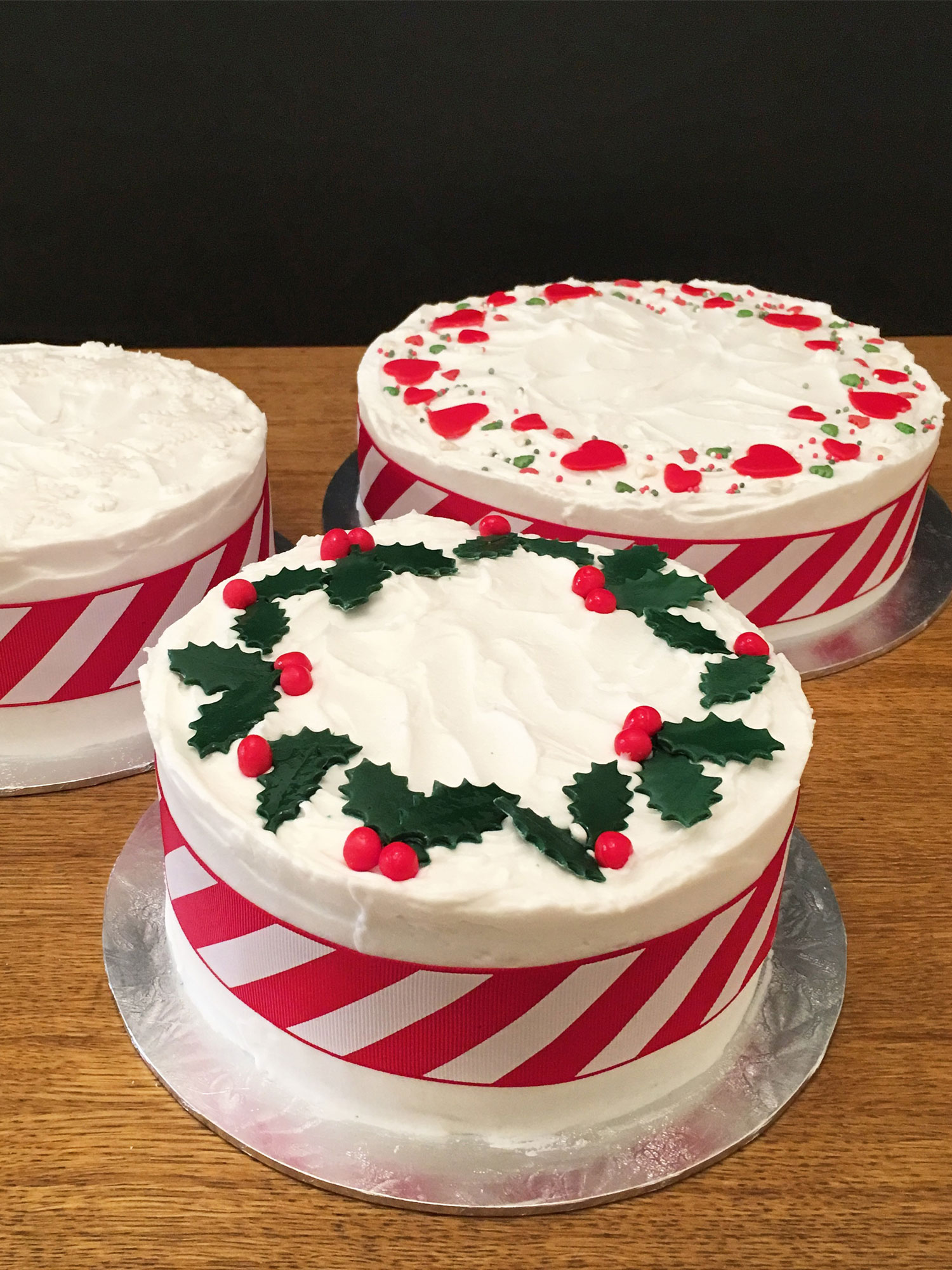Now, I have to say, it’s beginning to look a lot like Christmas around here! This year, it’s taken a long time for the festive feeling to reach our house – despite the deluge of Christmas adverts that have been on TV for months, and the length of time that the stores have been promoting the big day, it’s only now that it’s sinking in.
I feel I should apologise that it’s taken so long to get this recipe uploaded (or anything on this blog for that matter), but it’s been a hectic few weeks that have involved my birthday, family visits, flooding and quite a lot of cake preparation. With three cakes to bake and decorate in all, I’ve had to do the Christmas cakes in shifts this year, which has taken several weekends, so I’ve only just finished myself. Handily, my version of a Christmas cake is well suited to last-minute baking!
This recipe originated from BBC Good Food magazine in 2004, and I’ve been baking it every year since, albeit with a couple of tweaks. If you’ve had a read of the Love Christmas magazine, you’ll be aware that I’m not a huge fan of the traditional fruitcake, so I like to have a few alternatives up my culinary sleeve. This cake is based on an American recipe from the 1950s and is much lighter, without compromising on fruitiness. I’ve swapped some of the currants from the original for juicy sultanas, and have altered the cherry mix slightly as the packet mix specified is no longer available.
The muscovado sugar gives the cake a nice toffee flavour, and even though I can’t stand glace cherries normally when combined with the cranberries, dried sour cherries and apricots, they have a nice sticky texture to them that helps keep the cake moist (I much prefer the natural coloured ones to the Rudolph-nose-red ones though). The moistness of the fruit, also means the cake doesn’t need to be fed with booze, so it can be made much closer to Christmas, and is great for kids or those who abstain from alcohol.
Despite the cake itself not being wholly traditional, I do still cover it with marzipan and homemade royal icing – it’s just not the same cutting into a fondant-covered cake at this time of yet. As you’ll see from the picture, I’m not the best in the world at icing, but the haphazard snowy peaks and swirls are somehow part of the charm… and trust me, some tasteful ribbon hides a multitude of sins!

